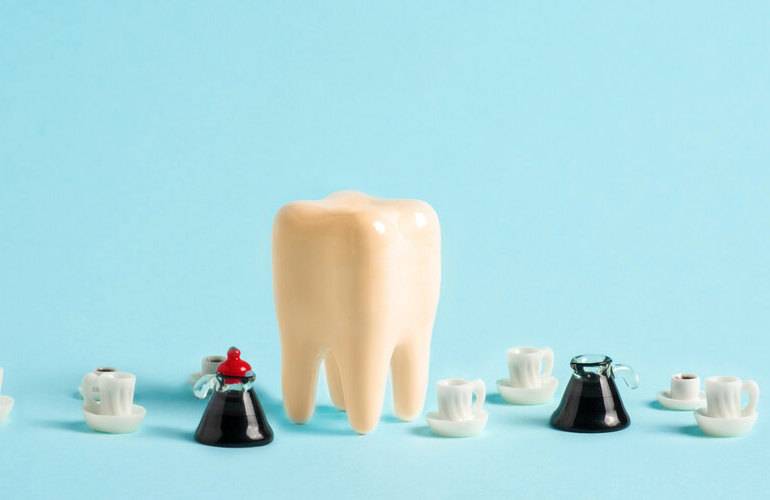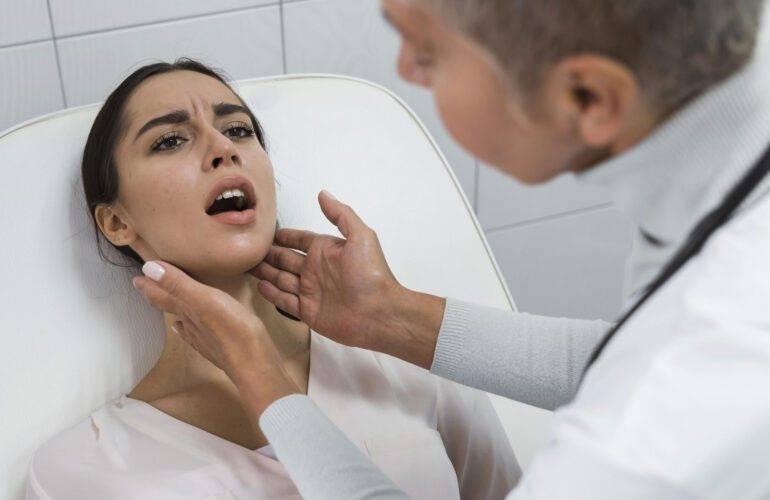What are black spots on teeth?
Black spots on teeth are discolorations that can vary in size, shape, and intensity. These spots can appear as small dots, streaks, or larger areas of pigmentation on the tooth surface. While they may sometimes be harmless stains, black spots can also indicate underlying dental issues like cavities or tartar buildup.
Common locations on teeth
Black spots commonly occur on the chewing surfaces of molars and premolars, where food particles and plaque accumulate. They may also appear near the gum line or in crevices, making them harder to clean and more prone to bacteria buildup.
Causes of black spots on teeth
Tooth decay and cavities
Black spots are often an early sign of tooth decay. Bacteria in the mouth produce acids that erode tooth enamel, leading to cavities. These spots may darken over time as the decay progresses, eventually forming holes or pits in the tooth surface.
Staining from food and beverages
Frequent consumption of dark-colored foods and drinks, such as coffee, tea, red wine, and soda, can lead to extrinsic staining. Over time, these stains can penetrate the enamel, causing black or brown discoloration.
Tartar buildup
When plaque hardens into tartar due to inadequate brushing and flossing, it often appears as dark spots near the gum line. Tartar not only affects the tooth’s appearance but also contributes to gum disease and other oral health problems.
Enamel hypoplasia
This condition occurs when enamel does not form properly during tooth development. The weaker enamel may appear discolored, often with black or brown spots, making teeth more susceptible to damage and decay.
Dental trauma
Injury to a tooth can cause internal bleeding or damage to the pulp, leading to dark discoloration over time. Trauma-related black spots are typically localized to the affected tooth.
Symptoms Associated with Black Spots
Pain or sensitivity
Black spots caused by decay often lead to symptoms like sharp pain or sensitivity to hot, cold, or sweet foods. This discomfort occurs because the enamel has been compromised, exposing the underlying dentin or nerves.
Changes in tooth texture
A black spot might feel rough or sticky when touched with the tongue or a dental instrument. These textural changes are often a sign of underlying decay or tartar accumulation.
Diagnosis of black spots on teeth
Visual examination by a dentist
During a routine dental check-up, your dentist will visually inspect your teeth for any discoloration or abnormalities. Special tools, such as dental mirrors, can help detect black spots in hard-to-reach areas.
Use of dental X-rays
X-rays are an essential diagnostic tool for identifying decay beneath the tooth surface. These images provide detailed insights into the extent of the issue, helping the dentist develop an appropriate treatment plan.
Treatment options for black spots
Professional dental cleaning
For black spots caused by staining or tartar, a professional cleaning at your dentist’s office can effectively remove the discoloration. Scaling and polishing techniques can restore the tooth’s natural appearance.
Cavity fillings and restorations
If the black spot is due to decay, your dentist may recommend a filling to restore the tooth’s structure. Advanced cases might require crowns, inlays, or onlays to provide additional support.
Whitening treatments for stains
Extrinsic stains can be treated with professional teeth whitening procedures. These treatments use safe, effective bleaching agents to remove discoloration and brighten your smile.
Preventive measures
Maintaining a consistent oral hygiene routine is key to preventing black spots. This includes brushing twice a day with fluoride toothpaste, flossing daily, and using an antibacterial mouthwash. Regular dental visits are also essential for early detection and prevention.
When to see a dentist for black spots on teeth
It’s important to schedule a dental appointment as soon as you notice a black spot that doesn’t improve with brushing or persists over time. Ignoring the issue can lead to more severe problems, including tooth loss or infection. Early intervention allows for more conservative and cost-effective treatments.
This comprehensive guide aims to demystify the causes, symptoms, and treatments for black spots on teeth. Prioritizing dental care and staying proactive can help preserve your oral health and prevent discoloration. If you’re in the Minneola, FL area, Neola Dental provides expert care to address black spots and other dental concerns. Schedule your appointment today to keep your smile healthy and vibrant!




